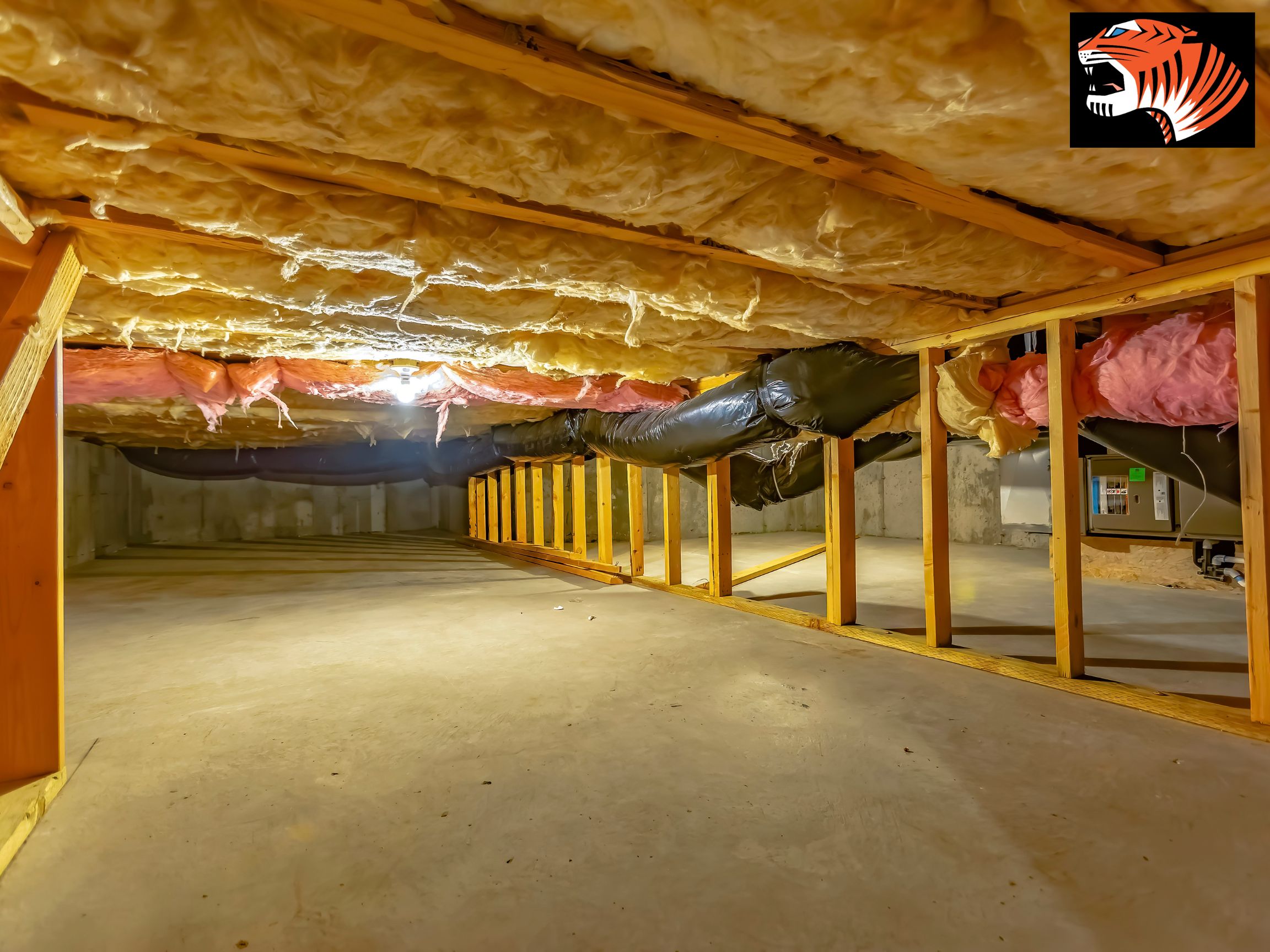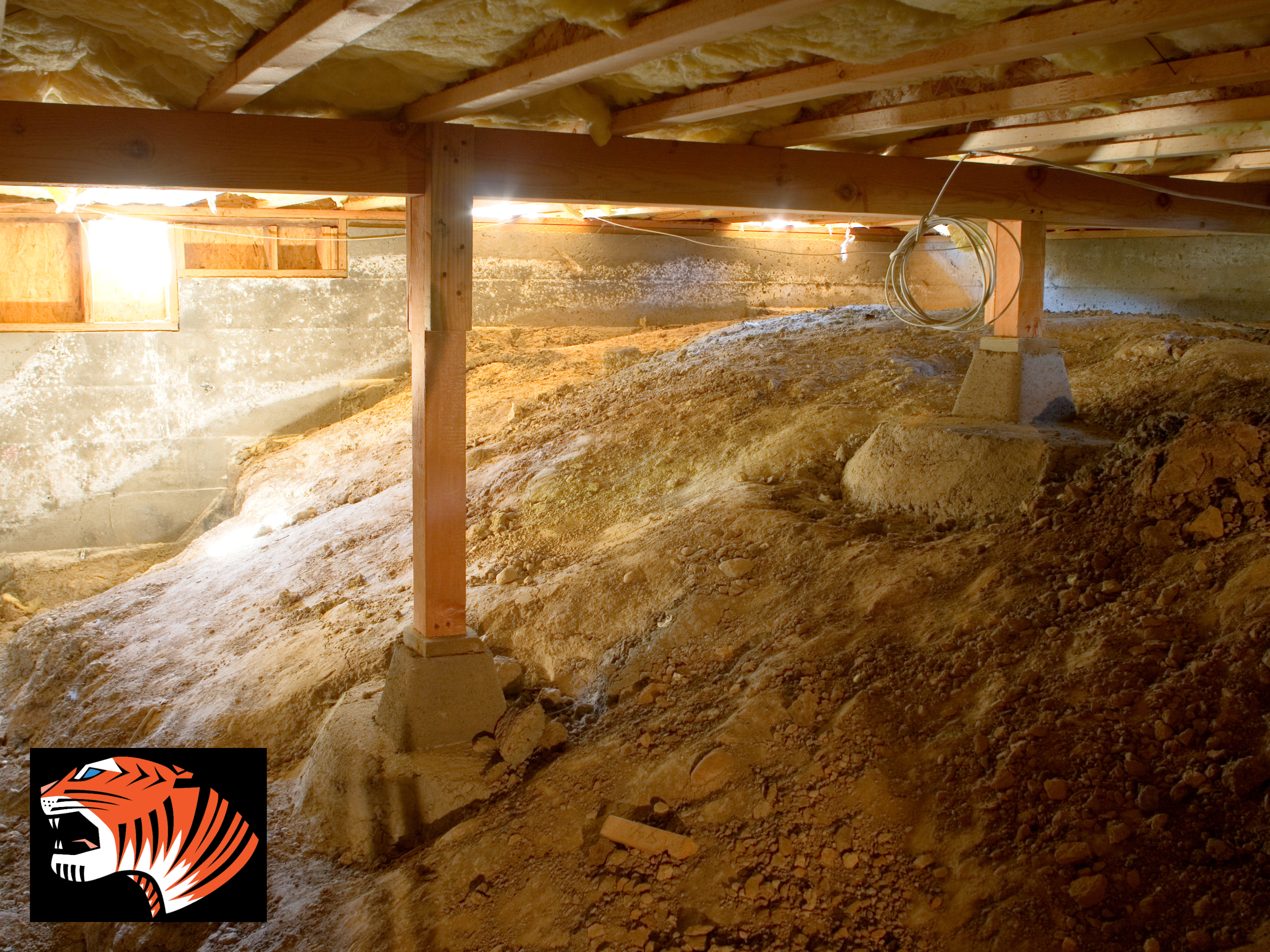
Imagine stepping into Crawl Space Encapsulation for your home and feeling a sense of freshness as if a cool breeze swept through. Tiger C Construction’s Guide to a Healthier Home with Crawl Space Encapsulation offers a transformative solution to enhance your living environment in Chester, VA.
By addressing underlying issues in your crawl space, you can pave the way for a healthier and more energy-efficient home. But how exactly does crawl space encapsulation work, and what benefits does it bring beyond moisture control?
Stay tuned to uncover the secrets to a healthier home environment that starts from the ground up.
Key Takeaways
- Prevent moisture issues and mold growth
- Enhance energy efficiency and indoor air quality
- Reduce HVAC usage and costs
- Ensure a healthier living environment
The Importance of Crawl Space Encapsulation
Crawl space encapsulation Chester VA is essential for maintaining a healthy home environment by preventing moisture buildup and enhancing overall indoor air quality. Moisture control is a critical aspect of crawl space encapsulation. By sealing off the crawl space, you prevent moisture from seeping into your home’s foundation. This helps in averting issues like mold growth, which can’t only damage your home’s structure but also pose health risks to you and your family. Proper ventilation is also pivotal. Encapsulation makes sure that any ventilation in place is directed to the outside, keeping the air circulating efficiently and preventing stagnant, damp air that can lead to problems.
Insulation is another key benefit of crawl space encapsulation. By sealing off this area, you provide an additional layer of insulation for your home. This helps in maintaining a consistent temperature indoors, leading to energy savings and increased comfort. Additionally, by encapsulating your crawl space, you create a barrier against pests. Rodents, insects, and other unwanted visitors find it challenging to make their way into your home through a properly encapsulated crawl space, protecting both your property and your family.
Common Issues in Unencapsulated Crawl Spaces
Unencapsulated crawl spaces often harbor various issues that can compromise both the integrity of your home and the health of its occupants. When left untreated, these problems can worsen over time, leading to costly repairs and potential health risks.
Here are some common issues found in unencapsulated crawl spaces:
- Structural Damage: Without proper encapsulation, moisture can seep into the crawl space, causing wooden support beams and floor joists to weaken and rot. This can jeopardize the structural stability of your home, posing a safety hazard to you and your family.
- Insulation Issues: In unencapsulated crawl spaces, insulation can become damp due to moisture infiltration. Wet insulation isn’t only ineffective in regulating indoor temperatures but also serves as a breeding ground for mold and mildew, further deteriorating the air quality within your home.
- Pest Infestations and Water Damage: Unencapsulated crawl spaces are often susceptible to pest infestations, including rodents, insects, and other unwanted critters. Additionally, water seepage through the foundation walls or soil can lead to standing water, creating a breeding ground for mold, mildew, and bacteria, which can adversely affect your health.
Addressing these issues through crawl space encapsulation near me can help mitigate these risks, ensuring a healthier and more structurally sound living environment for you and your loved ones.
Benefits of Moisture Control and Prevention
Maintaining proper moisture control and prevention in your crawl space is essential for safeguarding your home’s structural integrity and indoor air quality. By implementing effective moisture control measures, you can experience a range of benefits that contribute to your overall home comfort and well-being.
One of the key advantages of moisture control is the prevention of mold and mildew growth, which can thrive in damp environments and negatively impact your indoor air quality. By keeping moisture levels in check, you can create a healthier living environment for you and your family.
Additionally, moisture control helps in preserving your property value by preventing structural damage caused by excess moisture. Moisture can compromise the integrity of wood structures, leading to issues like rot and decay. By proactively managing moisture levels in your crawl space, you can mitigate the risk of costly repairs and maintain the value of your home over time.
To achieve effective moisture control, preventive methods such as crawl space encapsulation should be considered. This process involves sealing off the crawl space from the external environment, reducing the risk of moisture intrusion, and creating a more controlled space underneath your home. By investing in moisture control measures, you can enhance your home’s comfort, protect its structural integrity, and safeguard your indoor air quality for years to come.
Impact of Mold and Allergens
When it comes to your crawl space, mold poses serious health risks, triggering allergies and respiratory issues. Allergens lurking in damp, moldy spaces can exacerbate asthma and other respiratory conditions.
Addressing mold and allergens through encapsulation can greatly improve your indoor air quality and overall well-being.
Mold Health Risks
To safeguard your health, understanding the impact of mold and allergens in crawl spaces is essential. Mold prevention is important as exposure to mold spores can lead to various health effects, including allergies, skin irritation, and respiratory issues.
The presence of allergens in crawl spaces can worsen respiratory conditions such as asthma and trigger allergic reactions. Mold growth in enclosed spaces like crawl spaces can release harmful mycotoxins into the air, affecting your indoor air quality and potentially causing respiratory problems.
Proper encapsulation and moisture control in crawl spaces are necessary to prevent mold proliferation and reduce the risk of health issues associated with mold exposure.
- Mold prevention is key to avoiding health issues.
- Allergens in crawl spaces can exacerbate respiratory conditions.
- Encapsulation helps control moisture and mold growth.
Allergens and Health
Understanding the impact of mold and allergens in crawl spaces is crucial for safeguarding your health. Allergens such as mold spores, dust mites, and pet dander can trigger allergies and worsen respiratory conditions.
Crawl spaces can harbor moisture, creating an ideal environment for mold growth. When mold spores become airborne, they can circulate through your home’s indoor air, leading to allergy flare-ups and potential respiratory health issues.
By encapsulating your crawl space, you can effectively prevent allergens from entering your living space, improving indoor air quality and reducing the risk of respiratory problems. Additionally, proper encapsulation helps in controlling dust and allergen buildup, creating a healthier environment for you and your family.
Choose to prioritize allergy prevention and respiratory health with crawl space encapsulation.

Improving Energy Efficiency With Encapsulation
When it comes to improving energy efficiency with crawl space encapsulation, you can look forward to significant benefits.
By sealing off your crawl space, you can enjoy energy savings, as it helps in maintaining a more stable indoor temperature.
This, in turn, reduces the workload on your HVAC system, leading to lower energy consumption and costs.
Energy Savings Benefits
Encapsulating your crawl space can greatly enhance your home’s energy efficiency, leading to substantial savings on your utility bills. By sealing off your crawl space, you create a barrier that prevents outside air from infiltrating your home, resulting in lower energy consumption. This can lead to cost savings in the long run and a more comfortable living environment.
Reducing air leakage helps in maintaining a consistent indoor temperature.
Improved insulation helps your HVAC system run more efficiently.
Minimizing moisture levels can prevent mold growth and reduce the workload on your air conditioning system.
Temperature Regulation Improvements
Improving energy efficiency through crawl space encapsulation can lead to significant enhancements in temperature regulation within your home. By incorporating insulation upgrades, you create a barrier that helps maintain a consistent temperature, preventing heat loss in the winter and heat gain in the summer. This not only keeps your home more comfortable but also reduces the strain on your HVAC system, leading to energy savings.
Additionally, air circulation and ventilation improvements play a vital role in regulating temperatures effectively. Proper ventilation helps in controlling humidity levels, preventing moisture buildup that can lead to mold and mildew issues. These combined efforts result in a more balanced and comfortable indoor environment, enhancing the overall quality of living in your home.
Reduced HVAC Usage
Enhancing energy efficiency through crawl space encapsulation can lead to a notable reduction in HVAC usage, resulting in cost savings and environmental benefits. By encapsulating your crawl space, you can improve your home’s energy efficiency, which translates into reduced reliance on your HVAC system. This not only saves you money on energy bills but also contributes to a greener environment.
Here are a few key benefits:
- Increased energy efficiency lowers your HVAC usage, reducing energy costs.
- Improved indoor comfort levels as your HVAC system operates more effectively.
- Enhanced air quality by minimizing the entry of pollutants and allergens into your living space.
Take a step towards crawl space encapsulation for a healthier home environment and financial savings.
Steps to Properly Encapsulate Your Crawl Space
To properly encapsulate your crawl space, start by thoroughly inspecting the area for any existing moisture issues or damage that needs to be addressed. Look for signs of water intrusion, such as dampness, mold, or mildew, and make sure to fix any leaks or drainage problems before proceeding with encapsulation. Once you have verified the area is dry, you can move on to the next steps.
When it comes to insulation options for your crawl space, consider using materials like rigid foam board or spray foam insulation. These can help create a thermal barrier that prevents heat loss and maintains a more consistent temperature in your home. Additionally, insulating the walls of the crawl space can further improve energy efficiency.
For waterproofing techniques, sealing any cracks or gaps in the foundation walls and floor can help prevent moisture from seeping into the crawl space. Installing a vapor barrier on the floor can also be beneficial in reducing moisture levels. Make sure to overlap the seams and tape them securely to create a continuous barrier.
Maintenance Tips for Encapsulated Crawl Spaces
For effective upkeep of encapsulated crawl spaces, regular inspections and proactive maintenance are essential to guarantee top performance and longevity. Maintaining your encapsulated crawl space makes certain that your home remains healthy and free from potential issues that could arise if left unattended. Here are some maintenance tips to help you keep your encapsulated crawl space in peak condition:
- Seasonal Maintenance: Conduct regular seasonal check-ups to assess the condition of your encapsulated crawl space. Look for any signs of wear and tear, water intrusion, or pest activity. Addressing these issues promptly can prevent costly repairs in the future.
- Cost-Effective Solutions: When performing maintenance on your encapsulated crawl space, consider cost-effective solutions that can help prolong the life of the encapsulation. For example, sealing any gaps or cracks in the foundation can prevent moisture infiltration and reduce the risk of pest infestations.
- Pest Prevention and Moisture Monitoring: Implement pest prevention measures such as installing mesh screens, sealing entry points, and using pest deterrents to keep unwanted critters at bay. Additionally, regularly monitor the moisture levels in your crawl space to make sure that humidity levels remain within the recommended range.
Enhancing Indoor Air Quality in Your Home
Improving the air quality in your home starts with implementing effective ventilation systems to guarantee a healthy living environment for you and your family. When it comes to enhancing indoor air quality, utilizing air purification methods and ventilation strategies is vital.
Air purification methods such as air purifiers, UV germicidal lamps, and activated carbon filters can help remove impurities like dust, pollen, pet dander, and even mold spores from the air in your home. These devices work by trapping and neutralizing harmful particles, ensuring that the air you breathe is clean and fresh.
In addition to air purification, proper ventilation strategies play a significant role in maintaining good indoor air quality. Ensuring adequate ventilation in your home helps to reduce the buildup of indoor pollutants, moisture, and odors. Opening windows, using exhaust fans in kitchens and bathrooms, and installing a whole-house ventilation system are effective ways to promote air circulation and keep the air in your home healthy.
Summary
Indeed, by encapsulating your crawl space, you can create a healthier environment for your home. Say goodbye to moisture issues, mold, allergens, and high energy bills.
Isn’t it time you took the necessary steps to improve the air quality in your home and protect your family’s health? Don’t wait any longer – consider crawl space encapsulation with Tiger C Construction, LLC, today!
